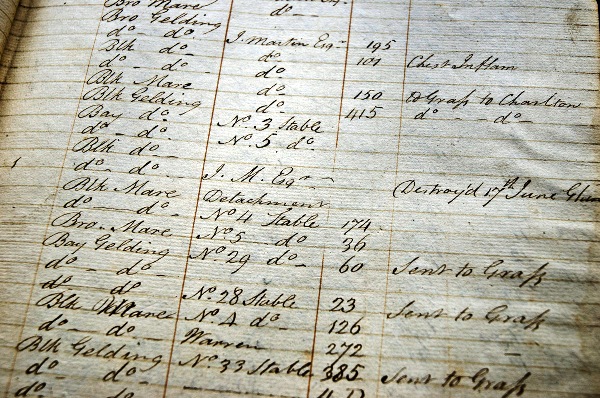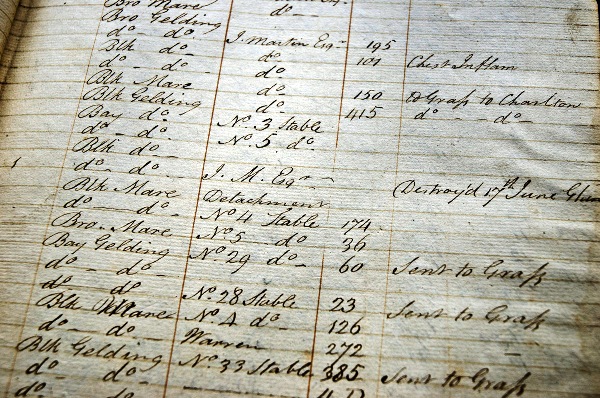200 year anniversary of the Battle of Waterloo: Unique records to be digitised
At our recent Summer Reception, guest speaker Kirsten Rausing announced £387,275 in funding from The ALBORADA Trust for a five year project to catalogue, properly store and digitise priority pieces from our historic collections and make them available for free online.
Amongst the documents we plan to digitise is a manuscript ledger recording the work of the Board of Ordnance Veterinary Hospital at Woolwich Barracks from 1802-1855 – a unique record of significance for the veterinary history of both the Battle of Waterloo and the Crimean War.
The hospital’s origins stem from February 1796 when the artillery horses stationed in Kent were reported to be in a diseased state. Edward Coleman, Professor at the London Veterinary College, was asked to investigate. His report confirmed that many of the horses had glanders and had been destroyed and recommended that a portion of the stables at Woolwich be set aside as an infirmary.
Coleman suggested that the infirmary could be staffed by a pupil from the veterinary college, who could remain in residence, and that he could attend once or twice a week. This plan was agreed very quickly and Coleman started as Medical Superintendent on 25 March 1796 at 10s a day and John Percivall as Assistant at 6s a day.
The ledger is divided into two parts – the first section lists the admissions of sick and injured horses from the
- Horse Brigade, Royal Horse Artillery,
- The Corps of Royal Artillery Drivers, the Riding Establishment
- Senior officers of the regiment stationed in Woolwich.
The second section is a store issuing and receipt book for the hospital which allows researchers to see the huge increase in supplies required directly after the Battle of Waterloo and during the build up to the Crimean War.
The National Army Museum’s Waterloo 200 project carries the strapline ‘discover the battle that changed the world’. We are delighted that on the 200th Anniversary of the Battle this document, which highlights the role of veterinary surgeons in this world-changing event, will soon be made available for all to view.
The digitisation project will start later this year – and I will post the history behind our most interesting and rare pieces and updates on progress here, so watch this space!
Image credit: Jacob Bland

